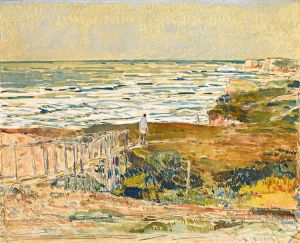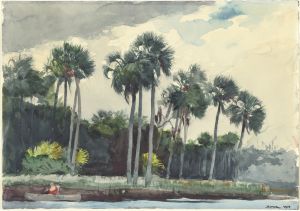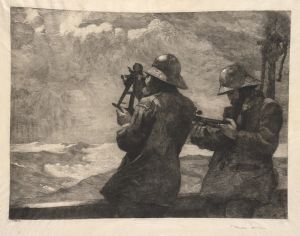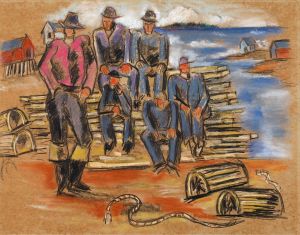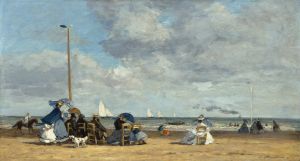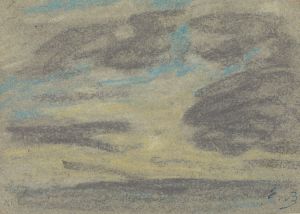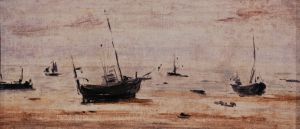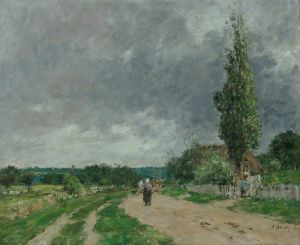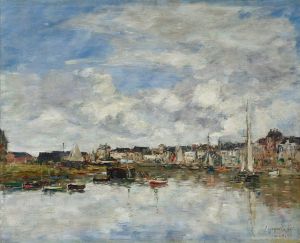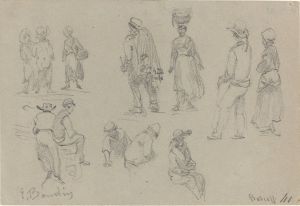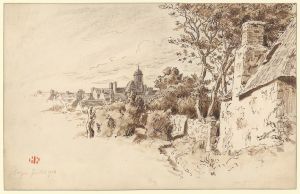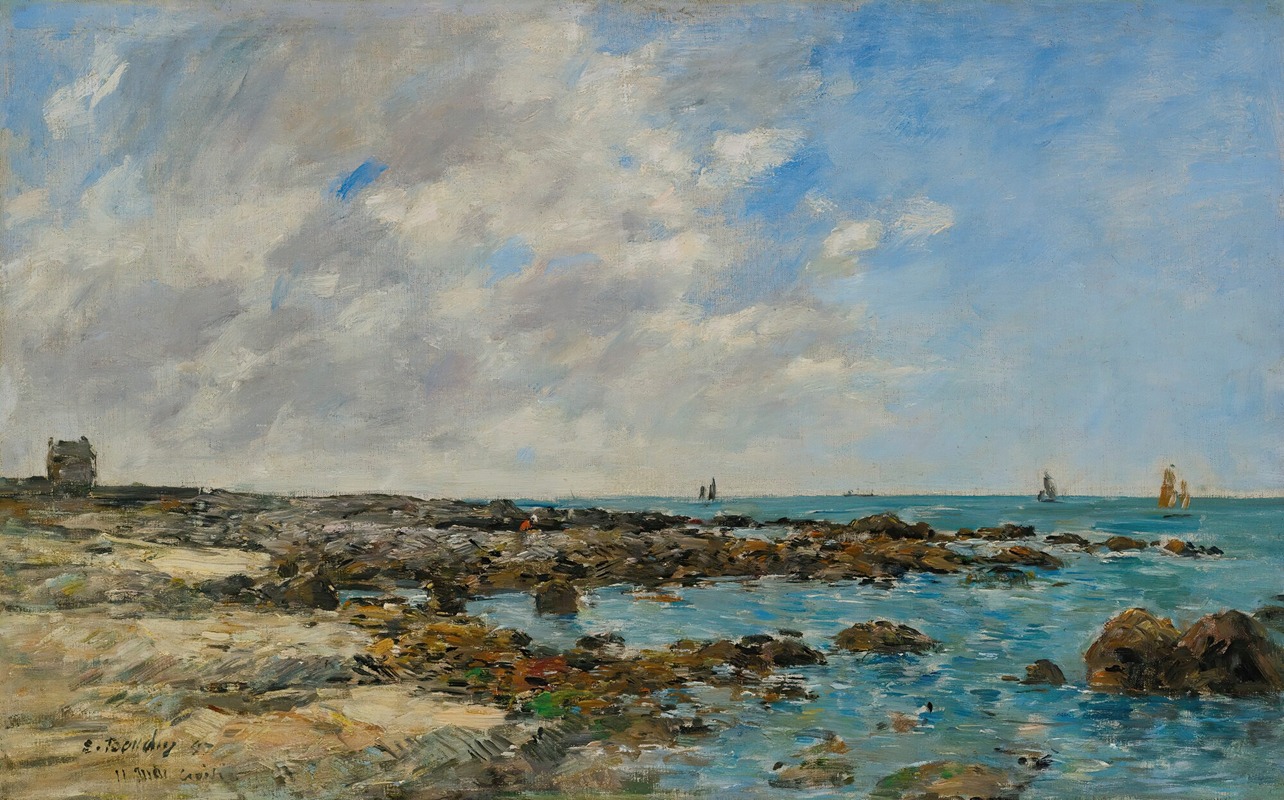
Le Croisic. Bord De Mer
A hand-painted replica of Eugène Boudin’s masterpiece Le Croisic. Bord De Mer, meticulously crafted by professional artists to capture the true essence of the original. Each piece is created with museum-quality canvas and rare mineral pigments, carefully painted by experienced artists with delicate brushstrokes and rich, layered colors to perfectly recreate the texture of the original artwork. Unlike machine-printed reproductions, this hand-painted version brings the painting to life, infused with the artist’s emotions and skill in every stroke. Whether for personal collection or home decoration, it instantly elevates the artistic atmosphere of any space.
Eugène Boudin (1824–1898) was a French painter known for his pioneering work in plein air painting and his significant influence on the Impressionist movement. One of his works, Le Croisic. Bord de Mer, depicts a coastal scene at Le Croisic, a small town located on the Atlantic coast in the Loire-Atlantique department of France. Boudin was particularly drawn to maritime and coastal landscapes, and this painting exemplifies his mastery in capturing the interplay of light, water, and sky.
Created in the latter half of the 19th century, Le Croisic. Bord de Mer reflects Boudin's characteristic style, which often focused on the natural beauty of seascapes and the atmospheric effects of weather and light. His technique involved the use of loose, fluid brushstrokes and a delicate color palette to convey the transient qualities of nature. This approach was highly innovative for its time and laid the groundwork for the Impressionist painters who followed.
Le Croisic, the setting of this painting, was a popular destination for artists and travelers during the 19th century due to its picturesque coastline and vibrant maritime activity. Boudin frequently traveled to coastal regions in France, including Brittany and Normandy, to find inspiration for his work. His ability to depict the ever-changing skies and the dynamic relationship between land and sea earned him the nickname "King of the Skies" from his contemporaries.
While specific details about Le Croisic. Bord de Mer—such as its exact date of creation or its current location—are not widely documented, the painting is representative of Boudin's broader body of work. His dedication to painting en plein air (outdoors) allowed him to observe and record the natural world with immediacy and authenticity. This practice was instrumental in shaping the Impressionist movement, as it encouraged artists to move away from studio-based work and engage directly with their surroundings.
Boudin's influence extended to younger artists, including Claude Monet, who credited Boudin with introducing him to the practice of outdoor painting. Today, Boudin's works are celebrated for their contribution to the development of modern art and their ability to capture the ephemeral beauty of nature. Le Croisic. Bord de Mer stands as a testament to his skill and vision as a painter of the natural world.





